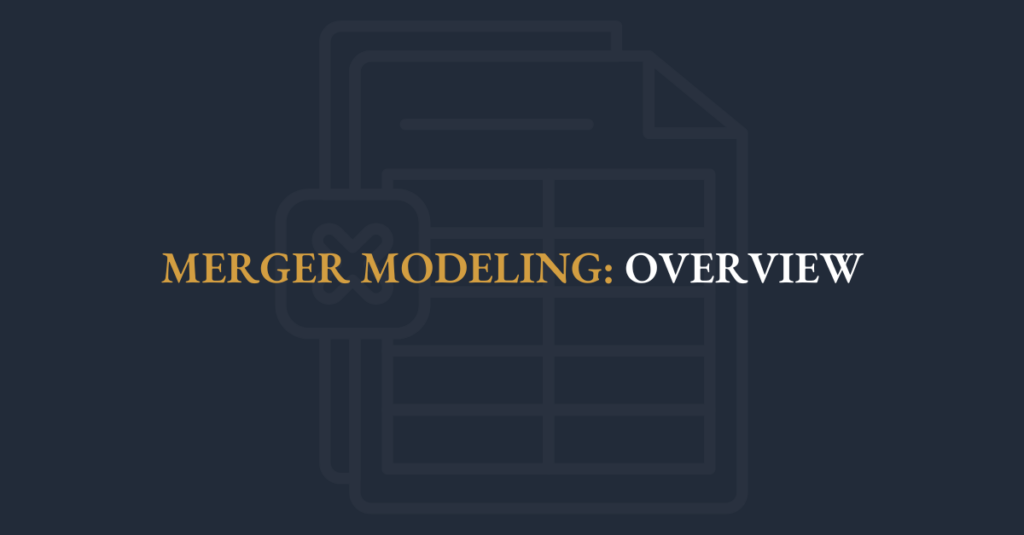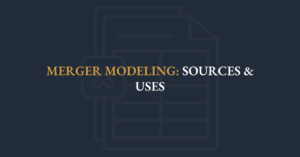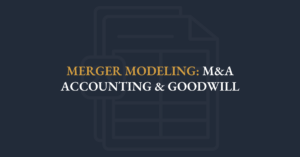
Why are Merger Models built?
Most “merger” models are built to analyze the impact of an acquirer buying a target company. Sometimes the model evaluates one specific target and sometimes it can evaluate different possible targets. But the financial and accounting ideas are the same.
This includes both:
- Valuation impact: What price should the buyer consider paying and what will this do to its own value?
- Financial impact: What is the impact on the buyer’s income statement (often measured by accretion / dilution in Earnings Per Share (EPS) when the buyer is a public company) and credit profile?
Models can also be built to look at the impact to a company selling an asset or business (i.e. a divestiture model), but this is a little less common.
Components of a Merger Model:
A typical merger or acquisition model might have the following components:
Assumptions:
- Buyer and target financials
- Synergy assumptions
- Purchase price and financing assumptions
Transaction Calculations:
- Purchase price allocation and goodwill
- Sources and uses of funds
- Closing balance sheet
Modeling:
- Schedules for financial statement line items
- Pro Forma buyer financial forecasts
- Valuation of stand-alone and combined companies
Output & Senstivities:
- Income statement impact
- Credit analysis
- Valuation and shareholdings analysis
Types of Merger Models:
Simple Model:
When used:
- Preliminary evaluation
- Need to quickly switch between target companies and compare results
Atrributes:
- Uses summary financials (or EPS for a public deal)
- Simplified transaction assumptions such as blended new debt
- Short forecast horizon (1-2 years)
Full Combination Model:
When used:
- Live negotiation/transaction
- Approvals for deal financing
Atrributes:
- Full financial statements
- Detailed assumptions
- Longer forecasts (5+ Years)
- Valuation support


